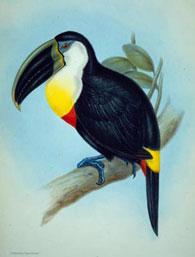Traditions & Culture of Collecting
Historyofscience.com is more than a bookselling site. It is also about the culture of collecting the history of science, medicine, and technology.

My Place in the Collecting and Bookselling Tradition
Since boyhood I have been involved to some extent with collecting. Initially I collected stamps, but I soon found collecting books more exciting. For almost for as long as I can remember my father collected rare books first in medicine and then also in science. By the time I was about ten years old Dad already owned thousands of books if one included his working library. When I was only thirteen my father took me to visit the famous antiquarian bookseller Ernst Weil in London. Then in his eighties, Weil had begun his bookselling career in rare scientific and medical books in Vienna between the two world wars. Soon thereafter I met the legendary collector of science and medicine, Herbert M. Evans, when Evans visited our home. Born in 1882 the son of a country doctor, Evans had been inspired to collect the history of medicine and science when he heard William Osler deliver his famous address on Michael Servetus at Johns Hopkins Medical School. Through Evans the tradition of collecting rare books and manuscripts in the history of medicine, science, and technology may be traced back to Osler.
I had the occasion to meet the octogenerian Evans several other times while I was in my early twenties working for Warren Howell at John Howell-Books in San Francisco. Evans was an unforgettable and inimitable character, influential on the collecting tastes of people like Bern Dibner and Harrison Horblit. While I was working at Howell’s and going to college I began assembling my collection on the history of the evolution controversy that was eventually auctioned under the title of Darwin’s Century. I also began my active collaboration with my father on the collecting of his library. You will find more detailed autobiographical reminiscences in my essays on Warren Howell and my father in the Collectors, Librarians, and Booksellers section.

Documentary Records of the Culture of Collecting
Traditions and Culture of Collecting is my attempt to provide documentary records of the culture of collecting in which I have been immersed for most of my life. Much of it comes from the files that I accumulated over the years, but I have also obtained information from other sources. The art of collecting is both a matter of following examples set by prior collectors, and a way for a collector to forge his/her own path through history. Like other historical subjects there is a history of history of science and medicine collecting. This history is not widely known, and is often forgotten. Yet understanding it is of great value for any collector, since what we collect today passed through private and institutional libraries of the past. Understanding what prior collectors owned is also helpful for understanding provenance, for assessing the rarity of various works based on their rarity in the past, and also for recognizing that there can be fashions even within such supposedly rational fields of collecting as the history of science, medicine, and technology.

The Art of Collecting
Along with an historical tradition there is also an art to collecting that comes both from the refinement of collecting skill through experience, and from the individual, personal approach. Collectors may collect the writings of certain authors, or they may collect authors within the history of a certain subject or subjects, or they may collect landmark classics across various subjects and periods of time. Besides collecting the traditional classics on a given subject, a collector may also collect on a previously neglected aspect, or collect from a new or different individual perspective.
Living as we do in a time of increasingly rapid scientific and technological change, there is security in collecting the traditional classics of the distant past. Yet there are also value and opportunities in collecting the achievements of the more recent past that may be more relevant to science and life today. Fields in science, medicine and technology that were not traditionally collected include computing, molecular biology, quantum physics, the theory of relativity, and electronics. Adding works to the canon of traditionally collected classics has been an interest of mine for many years. My book, From Gutenberg to the Internet, my draft Discovery of the Secrets of Life Timeline, and the auction catalogue of the Harvey Plotnick Library on the Development of Quantum Physics and the Theory of Relativity, and our forthcoming book, Discovery of the Stone Age, are among my efforts in this regard.
Collectors learn the art collecting from other collectors they may know, from personal communications with dealers they may visit, and from reading dealer and auction catalogues, as well as from catalogues of prior collections, reference works and bibliographies. Some of the standard reference books and bibliographies for collecting the history of science, medicine, and technology are well known and readily available. But some of the most interesting material is scarce and little known.

How this Collection is Organized
In this section I am attempting to bring together a growing collection of documents from various times and places including biographical accounts of collectors, dealers, and librarians, essays about the formation of significant private and institutional collections and libraries, little-known reference sources, descriptions of what the collecting experience might have been at various times in the past. By July 2009 in the section called Articles by and about Collectors, Librarians, and Booksellers we had over sixty publications of various lengths available from the site, mostly as downloadable PDFs.
Traditions and Culture of Collecting is currently arranged in the following general categories. To view a list of the contents of each category click on the links below.
back to top
